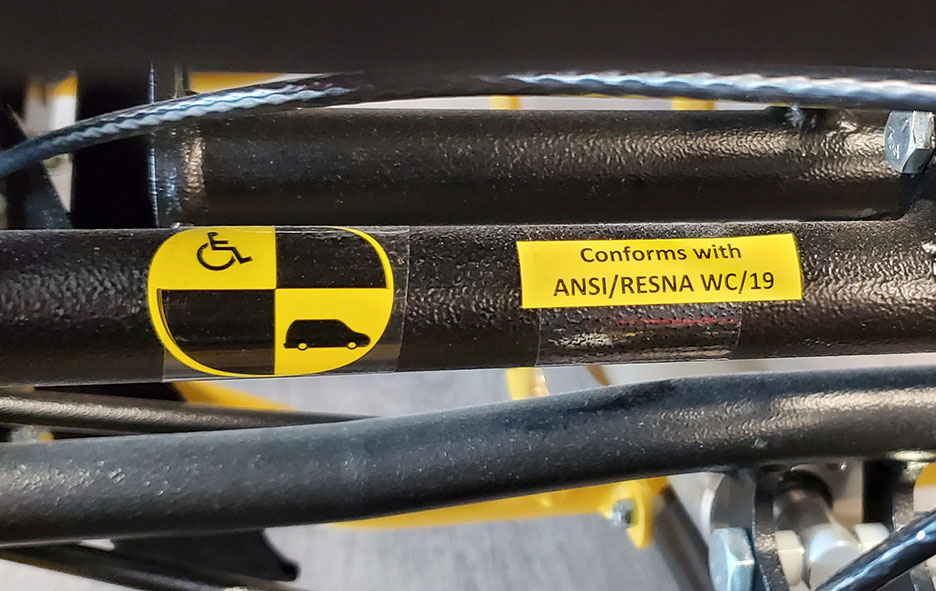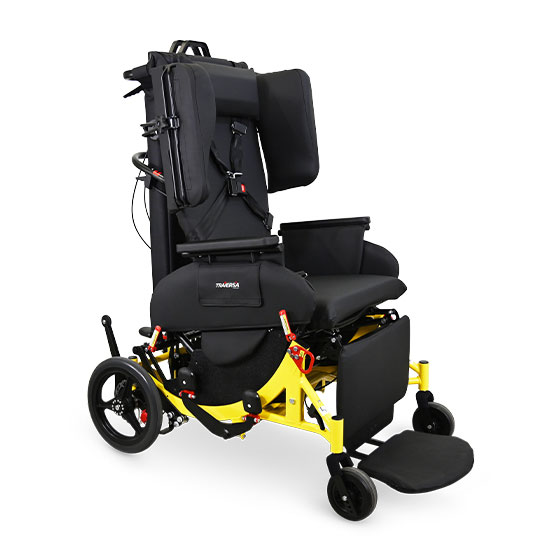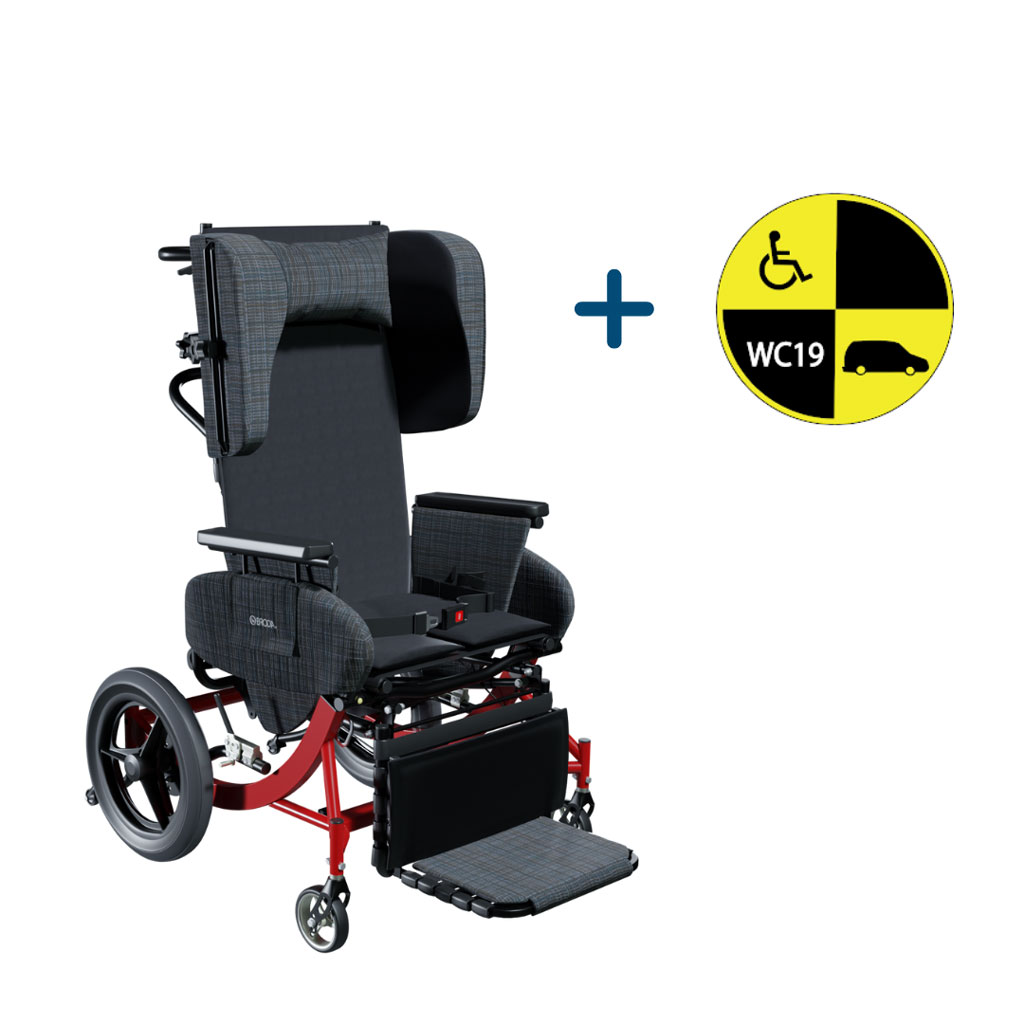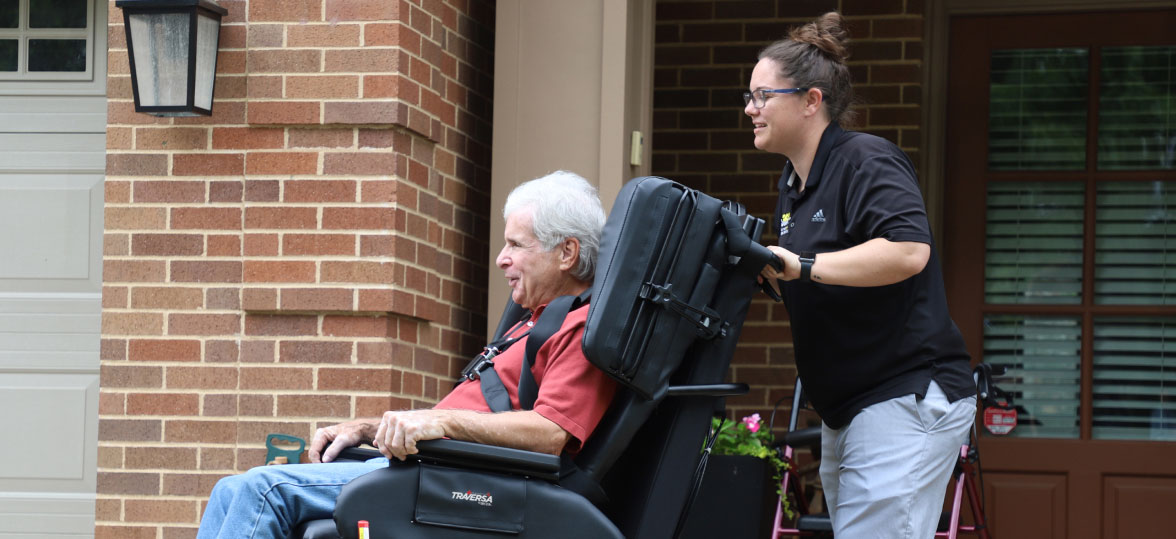When it comes to transportation safety laws, there’s a dangerous double standard that leaves one of our most vulnerable populations at risk: the elderly. Car seat manufacturers and families are subject to many regulations to keep kids safe. Conversely, there are no legal requirements for transporting wheelchairs and no federal regulations for wheelchairs being used as vehicle seats.1
While no one would disagree that car seat safety laws are vital for children’s well-being, vehicle passengers riding in wheelchairs are 45 times more likely to be injured in a crash than a typical passenger.2
Whether you are a facility providing transportation for residents or a non-emergency medical transportation (NEMT) business, you are responsible for ensuring that wheelchair users are safely and securely seated during travel.
Although there are no legal requirements for transporting wheelchairs with passengers in them, there is a set of standards in place to determine whether a wheelchair can be considered safe for vehicle travel. People who are purchasing their own wheelchairs should also be aware of these standards if they intend to use a vehicle for transport and must remain in their wheelchair.

Existing Standards for Wheelchair Travel Safety
The Wheelchair Transportation Standards for North America (WTS) are voluntary standards that are monitored by the University of Michigan Transportation Research Institute (UMTRI). These standards are the guiding principles that encourage mobility device manufacturers to include crash protection in their chairs and devices.
In 2000, the American National Standards Institute (ANSI) approved No. WC19: “Wheelchairs Used as Seats in Motor Vehicles,” making the guidelines the voluntary national standard in the United States. Furthermore, there are similar international wheelchair transportation safety voluntary standards from the International Organization for Standardization (ISO). Unfortunately, these standards are just that – voluntary. NEMT providers who follow these standards place themselves above their competition in the level of safety and security they can offer their passengers.

Are All “Transport Wheelchairs” WC19 Compliant?
Not all wheelchairs that are advertised as “transport wheelchairs” comply with the WC19 standards. On the contrary, many of them are low quality and will not hold up in the event of a motor vehicle accident. When comparing a transport wheelchair vs. a standard wheelchair, you need to look for more than vehicle tie-downs, smaller rear wheels, and enhanced portability from the chair’s lower weight. The essential difference between a transport wheelchair and a standard wheelchair is WC19 compliance.
Unfortunately, many NEMT providers, caregivers, accreditation agencies, or even government facility surveyors don’t know how to determine whether transport wheelchairs are properly certified or not. Because the regulations are only voluntary, compliance is easy to overlook. Without a doubt, it is critical for all industry stakeholders not to be complacent regarding the safety of patients, residents, and loved ones.
So, how can you tell if a wheelchair is WC19 certified and, therefore, safe to use as an in-vehicle transport wheelchair?
WC19 Wheelchair Requirements
In order to be WC19 compliant, a wheelchair must meet the following criteria:3
- The wheelchair must pass a 30-mph, 2G frontal impact crash test in which all chair components operate as expected without failing.
- The wheelchair must have labels certifying its WC19 compliance.
- The wheelchair must contain four securement points on the frame that are easy to access.
- The wheelchair must have a pelvic belt restraint that anchors directly to the chair.
- The wheelchair must have securement geometry that accepts a securement strap end-fitting hook.
- The wheelchair must be compatible with in-vehicle passenger safety belts.
- The wheelchair cannot have any sharp edges.

The Difference Between Child Seat Regulations and Wheelchair Travel Standards
To understand the importance of complying with WC19 standards, consider them the equivalent of child safety seat regulations for vehicle passengers who ride in wheelchairs, in and out of NEMT settings. Similar to the wheelchair transportation standards, all US states and many territories worldwide have legal requirements about the safety and security of child seats in motor vehicles.10 Unlike child seat regulations, however, the adult wheelchair equipment standards are voluntary and do not account for consistent, proper use.
Wheelchair transport equipment standards are a step in the right direction, but there is still a lack of accessible guidance on the proper use, securement, and positioning of wheelchairs in a vehicle. While many government agencies, such as the National Highway Traffic Safety Administration (NHTSA), have extensive information about the proper choice of car seats and booster seats for dependent children,11 there is little to no guidance for those who depend on wheelchairs for everyday transportation.
Injury Risks in Non-Emergency Medical Transportation (NEMT)
Though research is incomplete about the number of people in wheelchairs who are injured in vehicle travel, there are some sobering statistics. Among the injuries found in preliminary reports, 35% were attributed to improperly secured wheelchairs.12 NEMT operators can take steps to reduce risk and minimize accidents. Because the Wheelchair Transportation Standards are neither readily available nor mandatory, caregivers and transporters have little education, inconsistent rules to follow, and few incentives to avoid cutting corners for the sake of convenience.
Poor standardization and communication — combined with pressure to serve an increased number of patients every year — put passengers in a dangerous scenario. There are no external incentives for caregivers and transportation providers to take the time to correctly secure or position transport wheelchairs. Even if a serious accident doesn’t occur, bad positioning can lead to passenger agitation or discomfort. Eventually, incorrect wheelchair positioning can cause significant pressure injuries or even falls.

The Case for Higher Standards in Wheelchair Transportation
Mandatory regulations for wheelchair-accessible vehicles, their drivers, and the mobility wheelchairs themselves would save facilities money and provide incentives for excellent NEMT service. Higher standards would spark greater transparency, therefore giving caregivers more incentive to ensure their residents are properly cared for.
Summing up this sentiment, the United States Department of Transportation (USDOT) shared this feedback from a 2017 survey:
“The survey results and the input received… indicated a desire by some of the stakeholders for the establishment of mandatory rather than voluntary standards for wheeled mobility devices… There are a few wheelchair manufacturers who manufacture their products to meet these standards, but there are many that are distributed in the U.S. that do not meet any of the voluntary standards.”15
WC19 Certified Wheelchairs by Broda
Although there are few wheelchair manufacturers who meet these voluntary standards, Broda is proud to be counted among them. If you are looking for an excellent, compliant WC19 transportation wheelchair, then Broda is an excellent choice.
Our Call to Action
While new parents must comply with strict car seat requirements for their child to leave the hospital, our elderly or disabled family members and patients have no formal regulations to protect them when they leave a healthcare facility in a wheelchair. In conclusion, we invite you to join Broda in advocating for a change in global mandates to protect the safety of wheelchair users worldwide.
To find the WC19 certified Broda wheelchair that’s right for you, contact our team at 844-552-7632 or sales@brodaseating.com.
References
- Buning, M. E., Bertocci, G., Schneider, L. W., Manary, M., Karg, P., Brown, D., & Johnson, S. (2012). RESNA’s position on wheelchairs used as seats in motor vehicles. Assistive Technology: the official journal of RESNA, 24(2), 132–141.
- Songer, Thomas J et al. (2004) The injury risk to wheelchair occupants using motor vehicle transportation. Annual proceedings. Association for the Advancement of Automotive Medicine, vol. 48 pp. 115-29.
- University of Michigan Transportation Research Institute. (n.d.).WC19: Wheelchairs – WC transportation safety. Retrieved September 10, 2021, from https://wc-transportation-safety.umtri.umich.edu/wc19/
- International Organization for Standardization. (2012). ISO 10865-1:2012(en) Wheelchair containment and occupant retention systems for accessible transport vehicles designed for use by both sitting and standing passengers — Part 1: Systems for rearward-facing wheelchair-seated passengers.
- University of Michigan Transportation Research Institute. (n.d.). WC18: WTORS. WC Transportation Safety.
- International Organization for Standardization. (2012). ISO 10542-1:2012(en) Technical systems and aids for disabled or handicapped persons — Wheelchair tiedown and occupant-restraint systems — Part 1: Requirements and test methods for all systems.
- University of Michigan Transportation Research Institute. (n.d.). WC19: Wheelchairs. WC Transportation Safety.
- University of Michigan Transportation Research Institute. (n.d.). WC20: Seating Systems. WC Transportation Safety.
- International Organization for Standardization. (2009). ISO 16840-4:2009(en) Wheelchairs — Part 19: Wheeled mobility devices for use as seats in motor vehicles
- Governor’s Highway Safety Association. (n.d.). Child Passenger Safety. GHSA.
- National Highway Traffic Safety Administration. (n.d.). Car seats and booster seats. NHTSA.
- Association for the Advancement of Automotive Medicine. (n.d.). The Injury Risk to Wheelchair Occupants Using Motor Vehicle Transportation. NCBI.
- American Physical Therapy Association. (2018, March 9). Study: Falls among us adults 65 and older cost $50 billion in 2015. APTA.
- Boyko, T. V., Longaker, M. T., & Yang, G. P. (2018, February 1). Review of the current management of pressure ulcers. Advances in Wound Care.
- U.S. Department of Transportation Federal Highway Administration. (2017). National Household Travel survey.







